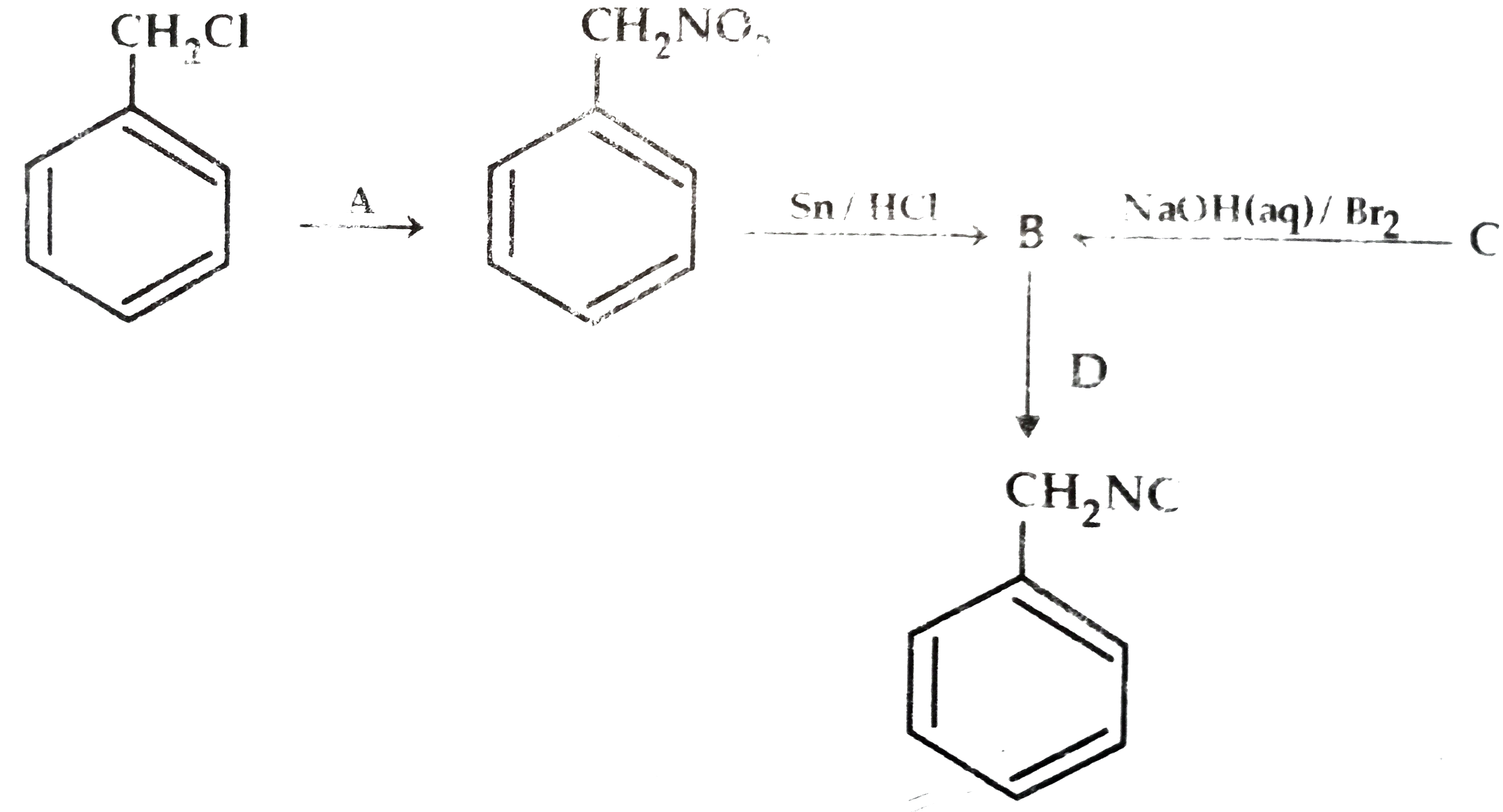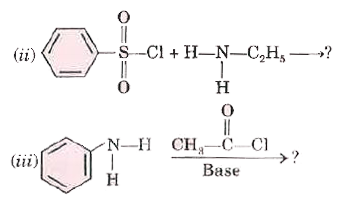Complete the following :
(i) CH3CONH2+HNO2→
To complete the reaction of acetamide with nitrous acid (HNO2), we can follow these steps:
1. Identify the Reactants:
The reactants are acetamide (CH₃CONH₂) and nitrous acid (HNO₂).
2. Reaction Overview:
When acetamide reacts with nitrous acid, it undergoes a deamination reaction, which typically results in the formation of a carboxylic acid and the release of nitrogen gas.
3. Formation of Acetic Acid:
The reaction proceeds as follows:
- The nitrous acid (HNO₂) reacts with the amide (CH₃CONH₂) to form acetic acid (CH₃COOH) and nitrogen gas (N₂).
- The overall reaction can be summarized as:
CH3CONH2+HNO2→CH3COOH+N2+H2O
4. Mechanism of the Reaction:
- Step 1: The amide nitrogen is protonated by HNO₂, making it a better leaving group.
- Step 2: The protonated amide then loses a molecule of water, forming a nitrosamine intermediate.
- Step 3: The nitrosamine undergoes rearrangement, leading to the formation of acetic acid and nitrogen gas.
5. Final Products:
The final products of the reaction are acetic acid (CH₃COOH), nitrogen gas (N₂), and water (H₂O).
Final Answer:
CH3CONH2+HNO2→CH3COOH+N2+H2O
The reactants are acetamide (CH₃CONH₂) and nitrous acid (HNO₂).
When acetamide reacts with nitrous acid, it undergoes a deamination reaction, which typically results in the formation of a carboxylic acid and the release of nitrogen gas.
The reaction proceeds as follows:
- The nitrous acid (HNO₂) reacts with the amide (CH₃CONH₂) to form acetic acid (CH₃COOH) and nitrogen gas (N₂).
- The overall reaction can be summarized as:
CH3CONH2+HNO2→CH3COOH+N2+H2O
- Step 1: The amide nitrogen is protonated by HNO₂, making it a better leaving group.
- Step 2: The protonated amide then loses a molecule of water, forming a nitrosamine intermediate.
- Step 3: The nitrosamine undergoes rearrangement, leading to the formation of acetic acid and nitrogen gas.
The final products of the reaction are acetic acid (CH₃COOH), nitrogen gas (N₂), and water (H₂O).
CH3CONH2+HNO2→CH3COOH+N2+H2O
Topper's Solved these Questions
- ALDEHYDES,KETONES AND CARBOXYLIC ACIDSBook:CBSE COMPLEMENTARY MATERIALChapter:ALDEHYDES,KETONES AND CARBOXYLIC ACIDSExercise:LONG ANSWER TYPE QUESTIONS (5 MARKS)
Explore 21 Videos
- ALDEHYDES,KETONES AND CARBOXYLIC ACIDSBook:CBSE COMPLEMENTARY MATERIALChapter:ALDEHYDES,KETONES AND CARBOXYLIC ACIDSExercise:SHORT ANSWER -I TYPE QUESTIONS (2 MARKS)
Explore 30 Videos
- ALCOHOLS, PHENOLS AND ETHERSBook:CBSE COMPLEMENTARY MATERIALChapter:ALCOHOLS, PHENOLS AND ETHERSExercise:LONG ANSWER TYPE QUESTIONS (5 Marks)
Explore 5 Videos
- AMINESBook:CBSE COMPLEMENTARY MATERIALChapter:AMINESExercise:5 MARKS
Explore 7 Videos
Similar Questions
Knowledge Check
Which of the following converts CH3CONH2 to CH3NH2 ?
ANaBrBNaOBrCBr2DNone of these
Complete the following reactions :
(i) CH3CH=CHCH2OHPCC−−→
(ii) C2H5NH2HNO2−−−→
View SolutionComplete the following question
(i).
(ii). CH3CH2CH=CH2+HBr→
View Solution(a) Identify A-D
(b) Distinguish between the following pair of compounds :
(i) Aniline and Benzylamine.

(ii) Methylamine and Dimethylamine
(c) Complete the following :
CH3CH2CNLiAIH4−−−−→A0∘C/HNO2−−−−−−−→B
View SolutionWrite the main products of the following reactions:
(i) CH3CH2NH2HNO2−−−−−−→0∘C ?

View SolutionComplete the reactions
(i) CH3CH3+HNO3vapour phase−−−−−−−→
(ii) CH4+O2Copper tube−−−−−−→723−773k
(iii) C2H5COONa+NaOHCaO−−→
View SolutionComplete the following :
CH3Cl+KCN→?Ni−−→H2?HNO2←−−−?
View SolutionComplete the following reactions and write main products : (i) CH3CONH2+HNO2→
View Solution